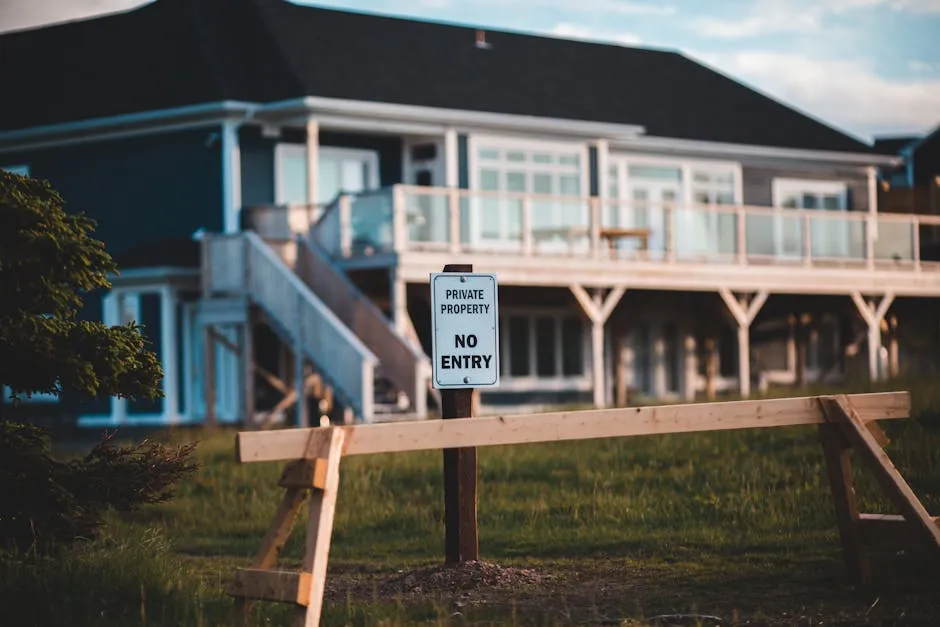Introduction
Nestled in the heart of Orange County, Florida, Pine Hills is a vibrant suburb of Orlando. Known for its rich cultural diversity, it draws residents from all walks of life. However, Pine Hills has also gained an infamous reputation, often referred to as “Crime Hills.” This nickname, although unfortunate, stems from its crime statistics that have raised eyebrows over the years.
This article aims to provide a thorough analysis of crime statistics in Pine Hills. We will compare these numbers with national averages and nearby communities, giving you a clearer picture of the safety landscape. Understanding these statistics is crucial for current residents and those considering a move to this neighborhood.
Crime statistics serve as a vital tool for assessing safety. They help residents make informed decisions about their safety and encourage potential movers to consider various factors before relocating. In presenting this information, we strive to make it accessible and engaging.
Our data sources include local law enforcement agencies and national crime databases, ensuring that the information is accurate and up-to-date. By compiling this information, we aim to empower the community with knowledge and foster a safer environment for everyone.

Overview of Pine Hills Crime Statistics
General Crime Overview
Pine Hills has a total crime rate that’s approximately 30% higher than the national average. This alarming figure fuels the narrative behind its notorious nickname. When locals mention “Crime Hills,” they often refer to an uncomfortable truth: that crime is a pressing issue in the area.
The perception of Pine Hills as a crime-ridden place impacts not only its residents but also potential newcomers. Many folks might hesitate to move here based on these statistics alone. However, it is essential to look at the numbers more closely for a better understanding of the situation.
If you’re looking to dive into some enlightening literature that explores crime and its effects on society, check out Crime and Punishment by Fyodor Dostoevsky. This classic novel delves into the mind of a criminal, offering a unique perspective on morality and consequence.

Current Crime Rates
Recent statistics reveal a violent crime rate of 37.3 per 100,000 residents, significantly higher than the U.S. average of 22.7. This discrepancy indicates that Pine Hills residents face a greater risk of violent crime, including assault and robbery.
Property crime in Pine Hills is also concerning, showing a rate of 59.9 compared to the national average of 35.4. This includes all sorts of property crimes, from theft to burglary, making it crucial for residents to take preventive measures.
To better prepare yourself against potential threats, consider investing in a Self-Defense Keychain Alarm. This compact device can provide peace of mind, alerting others if you feel threatened.
Examining crime trends, we find that while some types of crime have shown fluctuations, the overall picture remains troubling. Recent reports indicate a decrease in property crimes, which is a positive sign. However, violent crime remains a persistent challenge, and the community continues to work on strategies to improve safety.
In summary, while Pine Hills faces significant crime challenges, understanding these statistics can help residents and potential movers navigate the complexities of living in this community. With increased awareness, the hope is for a more secure future for Pine Hills and its residents. For a more detailed analysis of crime statistics, you can refer to the Fremont crime statistics.

Understanding crime statistics is essential for residents and potential movers. Fremont crime statistics provide valuable insights into safety concerns.
Detailed Breakdown of Crime Types
Violent Crime Statistics
Pine Hills grapples with some serious violent crime issues. The violent crime rate stands at 37.3 per 100,000 residents, far above the national average of 22.7. But hold your horses! Data on specific violent crimes like assault, murder, and rape in Pine Hills is mostly MIA. This absence makes it challenging to paint a full picture. National averages for these crimes include 282.7 for assault, 6.1 for murder, and 40.7 for rape. It’s a bit like having a jigsaw puzzle with critical pieces missing.
Local surveys reveal mixed feelings about safety. A poll conducted in the area showed that 45% of respondents felt “pretty safe,” while 42% admitted to having noticeable safety concerns. Only 6% felt completely secure, and another 6% expressed that they felt unsafe. This insecurity hints at a complex relationship between residents and law enforcement. According to the same survey, 39% noted that the police are visible but respond slowly. Only 27% felt that law enforcement is both visible and responsive. This points to a need for improvement in police-community relations, as many residents are left feeling anxious.

Property Crime Statistics
When it comes to property crime, Pine Hills is not winning any awards either. The property crime rate is an alarming 59.9, significantly higher than the national average of 35.4. This includes a variety of offenses such as burglary, theft, and motor vehicle theft. Unfortunately, specific breakdowns for these crimes in Pine Hills are also scarce. However, national averages give us a rough idea: 500.1 for burglary, 2,042.8 for theft, and 284 for motor vehicle theft.
Several factors contribute to these high property crime rates. Economic conditions play a huge role. Unemployment and poverty can drive people to desperate measures. Additionally, the presence (or absence) of active community programs can either deter crime or leave residents vulnerable. Communities with robust support systems often see lower property crime rates. Pine Hills has made strides in community initiatives, but there’s still room for growth.
To help protect your belongings, a Home Security Camera System by ZOSI can provide peace of mind and help deter potential thieves.

Year-over-Year Crime Trends
Looking at the historical data, Pine Hills has seen fluctuations in crime rates over the years. Recent statistics indicate a decrease in property crime by 15%, which is a glimmer of hope. However, violent crime continues to be a persistent issue. Local authorities have implemented several initiatives aimed at combating crime, such as community outreach programs and increased police presence during peak crime hours. The effectiveness of these strategies remains a hot topic among residents.
The community is gradually realizing that collaboration is key. Local programs focusing on youth engagement aim to redirect potential offenders toward more positive paths. These efforts, while still in their infancy, show promise in reducing crime rates over time. The commitment to improving safety in Pine Hills reflects a community that refuses to be defined solely by its crime statistics.
In conclusion, while Pine Hills faces significant challenges regarding both violent and property crime, community engagement and targeted initiatives present a pathway toward a safer environment. It’s a gradual process, but as residents band together, the hope is for a more secure and vibrant Pine Hills.

Comparative Analysis of Nearby Areas
Crime Statistics in Similar Communities
When comparing Pine Hills to its neighboring communities—Ocoee, Eatonville, and Maitland—it’s clear that crime rates vary significantly. Each area presents its unique challenges and circumstances affecting safety.
Starting with Ocoee, it has a violent crime rate of 313.4 per 100,000 residents and a property crime rate of 2,695.6, showcasing a marked difference from Pine Hills. The higher property crime rate in Ocoee might be influenced by its increasing population and urban development, which often attract more criminal activity.
Then there’s Eatonville, which boasts a staggering violent crime rate of 1,683.2 per 100,000 residents, coupled with a property crime rate of 4,920.2. This sharp rise in both categories makes Eatonville one of the more dangerous areas in the vicinity. Factors contributing to these elevated rates could include socioeconomic challenges, such as poverty and unemployment, combined with a lack of community resources.

Meanwhile, Maitland offers a more reassuring picture, with a violent crime rate of 153.7 and a property crime rate of 1,860.4. Its lower crime rates can likely be attributed to its affluent nature, active community programs, and robust law enforcement presence, making it a safer alternative for families and potential residents.
In contrast, Pine Hills’ crime rates of 37.3 for violent crime and 59.9 for property crime suggest it is in a somewhat precarious position. These statistics place Pine Hills in a different light, indicating that while it faces challenges, it isn’t the worst in the area. Understanding these statistics can help residents and prospective movers make informed decisions.
Community Perception and Safety Rankings
The perception of safety in Pine Hills compared to its neighbors is another critical aspect. Community reviews often reflect mixed feelings about living in Pine Hills. In a recent poll, 45% of residents reported feeling “pretty safe,” while 42% admitted to noticeable safety concerns. This sense of unease is echoed in the community’s nickname, “Crime Hills.” Such labels often overshadow the positive attributes and initiatives within the area.
In contrast, Ocoee and Maitland generally receive more favorable reviews regarding safety. Residents in Ocoee often feel more secure due to its community engagement and law enforcement efforts. Maitland, with its lower crime rates, garners even higher satisfaction, making it a sought-after destination for families.
Eatonville, however, faces a tougher battle for community perception. The high crime rates lead to a prevailing sense of insecurity, impacting the neighborhood’s desirability. Many residents express frustration about the lack of effective law enforcement response, contributing to a feeling of vulnerability.

Safety rankings also reveal that Pine Hills is deemed safer than only about 20% of cities in the United States. This ranking highlights the urgent need for community initiatives and law enforcement strategies to uplift the area’s reputation. In contrast, Maitland ranks significantly higher, indicating a safer environment for its residents.
In summary, while Pine Hills has its challenges, ongoing community efforts and the comparison to neighboring areas offer hope. Understanding the nuances of crime statistics and community perceptions can help residents advocate for positive change and work towards a safer Pine Hills.
Community Initiatives and Improvements
Local Efforts to Improve Safety
Pine Hills is not just about statistics; it’s about community spirit! Local programs are springing up, aiming to turn the tide on crime. One shining example is the Future Leaders United (FLU) program. This initiative focuses on mentoring youth at Maynard Evans High School, providing them with scholarships, health education, and community service opportunities. It’s like putting a superhero cape on our youth, steering them away from crime and towards brighter futures.
Community involvement plays a critical role in shaping perceptions of safety. More residents are stepping up to participate in local initiatives. For instance, after recent tragic events, attendance at community meetings has surged. Parents are getting involved, voicing their concerns, and collaborating on safety strategies. This newfound engagement is a game-changer! It fosters a shared sense of responsibility, making safety a collective mission.

The impact of these programs is encouraging. Surveys show that 45% of residents feel “pretty safe,” while 42% acknowledge some safety concerns. Those numbers reflect a community that’s aware but also willing to fight for improvement. As residents rally together, crime rates may not just decline; they could transform Pine Hills’ reputation from “Crime Hills” to “Prime Hills.”
If you’re interested in enhancing your own safety at home, consider a Smart Home Security System by SimpliSafe. This system is easy to set up and offers peace of mind with 24/7 monitoring.
Law Enforcement and Public Safety Measures
Law enforcement isn’t just about patrol cars zooming by. In Pine Hills, it’s about building relationships and trust within the community. Local police have ramped up their engagement efforts, ensuring they’re not just a presence but part of the community fabric. Residents report that while police visibility is appreciated, there are still concerns regarding response times.
Community-police partnerships are evolving to address these issues. Programs like neighborhood watch groups and community policing initiatives encourage active participation from residents. Officers are starting to hold informal gatherings, making them more accessible and approachable. This humanizes law enforcement, helping residents see them as allies in safety, not just enforcers of the law.

Moreover, the Pine Hills Community Council is working closely with law enforcement to implement strategies aimed at improving response times and enhancing communication. This collaboration is vital for fostering trust, which is essential for effective policing.
Through these collective efforts, Pine Hills is on the path to creating a safer environment. The community and law enforcement are realizing that safety is not a solo act; it requires teamwork and a united front. Together, they’re crafting a narrative that emphasizes resilience, hope, and a strong commitment to improving the quality of life for all residents. The future looks bright, and with ongoing efforts, Pine Hills may soon shed its notorious nickname for good.
Conclusion
In our exploration of Pine Hills crime statistics, we’ve uncovered a mixture of alarming figures and hopeful community initiatives. The violent crime rate stands at 37.3 per 100,000 residents, significantly higher than the national average of 22.7. Property crime in Pine Hills is also troubling, with a rate of 59.9 compared to the national average of 35.4. These numbers contribute to Pine Hills’ unfortunate nickname, “Crime Hills,” which often overshadows the community’s many positive attributes.
However, it’s crucial to recognize the efforts being made by local residents and organizations to combat crime and improve safety. Programs like Future Leaders United are not just statistics; they represent tangible steps toward fostering a safer environment. Community members are actively participating in initiatives aimed at youth engagement, mentorship, and promoting a sense of responsibility.
The community’s spirit shines through its determination to shift perceptions. As residents rally together, they strive to transform Pine Hills from a label of crime to a beacon of hope. By staying informed about crime trends and participating in local safety initiatives, residents can contribute significantly to creating a more secure neighborhood.
Collaboration between community members and law enforcement is key. Effective communication and trust-building efforts can lead to improved safety outcomes. When the community and police work hand-in-hand, they can develop strategies that address crime head-on and foster a supportive, connected environment.
In conclusion, while Pine Hills faces significant challenges regarding crime, the commitment of its residents to improve safety and community well-being is commendable. It’s essential to stay vigilant and proactive, knowing that change is possible when people unite for a common cause. Pine Hills can indeed become a safe haven for its residents, turning its reputation around one step at a time.

FAQs
What are the current crime rates in Pine Hills?
The crime rates in Pine Hills are concerning. The violent crime rate is currently at 37.3 per 100,000 residents, while property crime stands at 59.9. These figures are significantly above the national averages of 22.7 and 35.4, respectively. Residents should be aware of these rates as they reflect potential safety concerns in the community.
How does Pine Hills compare with national averages for crime?
Pine Hills has a stark difference when compared to national averages. The violent crime rate is 64% higher than the national average, and property crime is 69% above average. This disparity highlights the need for ongoing community efforts to address safety issues.
What measures can residents take to improve safety in Pine Hills?
Residents can take several practical measures to enhance safety. First, they should engage in community watch programs and remain vigilant about suspicious activities. Keeping homes secure with quality locks and security systems is also essential. Regularly participating in community meetings can foster cooperation between residents and law enforcement, building a stronger network for safety.
Are there community programs aimed at reducing crime in Pine Hills?
Yes! Programs like Future Leaders United aim to engage youth and provide mentorship, steering them away from negative influences. Additionally, community councils work toward improving neighborhood safety through local initiatives. These efforts focus on creating a supportive environment for residents and reducing crime rates over time.
How can potential residents assess safety before moving to Pine Hills?
Potential residents can assess safety by researching crime statistics through local law enforcement websites and community forums. They can also connect with current residents to gain insight into their experiences. Visiting the neighborhood at different times can provide a more comprehensive understanding of the area’s safety dynamics.
If you’re looking to unwind after reading about such serious topics, perhaps a good book is in order. Consider The New Jim Crow: Mass Incarceration in the Age of Colorblindness by Michelle Alexander. It’s a thought-provoking read that dives deep into the issues of race and justice in America.
Please let us know what you think about our content by leaving a comment down below!
Thank you for reading till here 🙂
All images from Pexels




